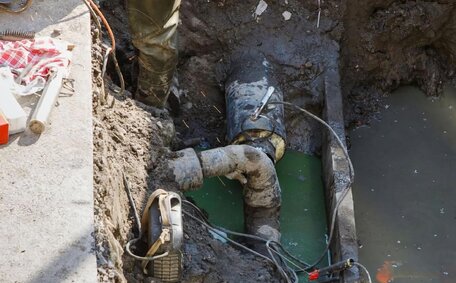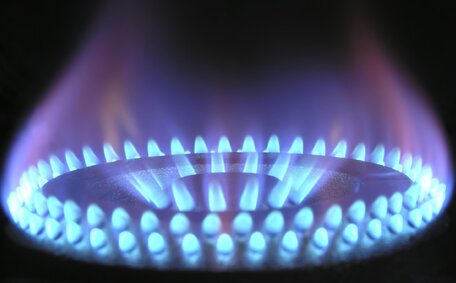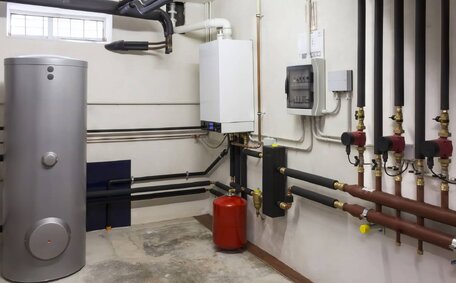
Sump Pump Failure Solutions
Sump pumps fail due to power outages, clogs, frozen pipes, and more. Prevent water damage by understanding causes and contacting plumbers for solutions to extend pump life.
Read MoreBlocked drains frequently occur in households. Gunk, grime, hair, and food scraps are often the culprits behind sluggish sink drainage or fully jammed sink plugholes.
Your sinks in the kitchen and bathroom get frequent use for washing dishes, brushing teeth, preparing food and more, making blocked sinks the most common issues.
While kitchen and bathroom sinks have similar functions, understanding how to unblock them differs based on the cause of the blockage. Kitchen sinks accumulate grease, oil, and small particles such as rice or coffee grounds, leading to blockages that impede water flow. Bathroom sinks are more commonly stopped up from a combination of soap scum hair accumulating in drains.
Diagnosing the source of the blockage, such as tree roots, is key to find out the best approach for resolving sink clog issues.
This guide will explore sink functionality, address standing water issues from clogs, delve into how unblocking strategies vary depending on the situation, and offer solutions for achieving free-flowing drains. We’ll cover DIY methods using boiling water down the drain, plungers, drain augers and more to unclog bathroom and kitchen sinks, as well as discuss when to call a professional plumber to properly eliminate persistent clogs.
Your kitchen sink’s garbage disposal can commonly become blocked, causing the sink to start draining slowly from an accumulation of grease and food debris over time. Blocked drains result from substances like grease and food debris accumulating over time:
An oil grease mixture is one of the biggest culprits of kitchen sink clogs, and you’ll need to address this to keep your drains clear. Liquid grease poured down the drain can solidify into blockages, requiring careful disposal practices. These deposits capture passing food scraps and other items, eventually amassing into a substantial clog.
Understanding why your kitchen sink drain pipe requires proper care and waste disposal habits helps prevent rapid accumulation of build-up. Addressing a fully blocked pipe often requires disassembly and a clean out by a professional plumber.
Over time, pipes become narrowed by grease, food, and other debris. When drainage slows, this signals that prevention methods have lapsed, but you can use DIY solutions to tackle the problem.
Food scraps going down the kitchen sink are one of the leading causes of drain clogs. Items like:
These food particles can easily wash down the drain initially, but tend to accumulate over time. As debris builds up, it narrows pipe walls and restricts water from travelling down plughole effortlessly. Grease and other sticky substances cling to the food particles, making clogs worse.
To avoid a sink blocked from food waste, refrain from rinsing excess debris off dishes into sinks. Use sink strainers to catch stray particles during dishwashing.
Compost vegetable peels, shells and grounds when possible. Regularly empty strainer contents into your main waste bin.
While a bit of organic matter does break down with regular water flow, too much food waste overwhelms residential plumbing over time. Properly disposing of scraps reduces sink blockage incidents and costly plumbing repairs.
Pouring grease oil down your kitchen sink drain from cooking is a significant contributor to clogs. When meat fats, cooking oils, butter, and other greasy products go down the drain, they coat the insides of pipes. As these substances cool, they can build up over time into solid lumps that cling to drain pipe walls.
Over time, a significant layer of fatty deposits accumulates inside drains. Food particles and other debris passing through the pipes stick to these greasy clumps, creating a scenario where one wonders how much can the drain take. Drainage paths become narrowed, slowing water flow and easily backing up when more waste enters the system.
To prevent clogs related to grease oil mixtures, do your best to keep fats, oils and greasy residues out of the kitchen sink. Establishing these habits will save you from major plumbing disasters down the road.
Wipe plates and pans to clean area of grease before washing. Discard excess grease into the trash with your hands instead of the drain.
Identifying the causes behind bathroom sink clogs involves understanding materials different from those found in kitchen sinks. Common causes of bathroom sink blockages include:
As people groom themselves in the bathroom, excess hair, skin cells, and various toiletries make their way into your home’s sink basins. Individually, these substances may not pose issues. Gradually, bathroom sink drains accumulate a dense layer of residue from these materials.
Hair and fibrous items like floss or cotton pads tend to knot and tangle into large obstructions within drainage vent pipes, creating significant blockages. Soap scum and facial product residues fuse these knots together and coat drain walls. Smaller openings get blocked faster, but even wider pipes can succumb over years of buildup.
Using drain catchers and minimising what gets rinsed down your bathroom sink drastically cuts down on clogs. But some accumulation is inevitable with continual use, eventually requiring plumbing service to properly clear bathroom sink blockages.
Excess hair going down bathroom sinks is a major contributor to drain clogs. As hair washes down the basin, it accumulates into large knotted clumps inside pipes. Strands catch on any small obstructions or rough edges, fusioning into an increasingly dense mass.
Hair buildup inside drains also traps other materials like soap scum, which can clog your pipes with residue and skin cells. Over months and years of bathroom use, pipes fill with a packed layer of hair, gunk, and grime.
To prevent hair-related clogs, keep your sink free of excess strands from combs and brushes before rinsing. Install a hair catcher over sink outlets to snag loose hairs that come out during grooming or washing. Check and empty the catcher regularly before strands reach the sink’s drain opening.
For existing hair accumulations in a clogged sink, you can try using a drain snake or a zip-it style cleaning tool to remove wadded hair. Removing wads of hair before they fully obstruct water flow saves extensive plumbing repairs down the road.
Toiletries like mouthwash, toothpaste, facial cleansers, makeup, and more routinely get washed down bathroom sinks during grooming routines. Over time, rinsing these products with water down sink can leave sticky residues that coat pipe interiors. Cosmetic items also contribute microplastics and chemical compounds that have negative environmental impacts.
To prevent sink clogs and pollution, refrain from rinsing excess products water down drain systems. Dispose of wipes, cotton pads, and other items in the trash rather than the sink.
Ensure you wipe basin surfaces to remove residues before washing faces or hands.
For existing buildup from years of product disposal, try using a zip-it cleaner to fish out and find out how to remove wads of gummed-up gunk from pipes. Supplement with boiling water or chemical drain cleaner if needed. Adjusting habits can help minimise sink rinsing to keep both bathroom plumbing and the planet healthy.
Kitchen and bathroom sinks utilise different types of plumbing. They may connect straight to the main waste line where you can see if any twists or turns cause sink blockages.
Kitchen sinks feature wider drain lines more suited for disposing of food particles. Bathroom sink pipes tend to be narrower, often snaking behind walls and under floors before connecting to waste lines.
Narrower pipes in bathroom sinks are more prone to blockages from hair and buildup, impeding water flow. Kitchen sink piping dimensions provide more room for debris to pass through before accumulating into full clogs. However, neglecting disposal habits can still result in a clogged kitchen sink over time.
Understanding typical piping layouts grants insight into the water’s path, the causes of sink clogs, and prevention methods for clearing them. Make sure to adjust habits based on a sink’s size constraints and position in the plumbing system to help maintain unimpeded drainage.
When facing a clogged kitchen or bathroom sink, try these DIY methods before calling a plumber:
Avoid using caustic chemical drain cleaners, as these corrode pipes. Seek assistance from a commercial drain service if DIY methods fail to get the job done and see what a professional can do to restore proper flow to your drains. You can find a plumber who can fully clear obstructions with high-power drain augers or hydro-jetting equipment.
A plunger effectively displaces clogs in both kitchen and bathroom sink pipes. Select a bell-shaped plunger, suitable for sinks, and seal any overflow outlets first.
Vigorously work the plunger up down 10-15 times to dislodge the clog, ensuring you get your sink plumbing clear of debris.
In bathroom sinks, aim the plunger toward the P-trap, known as the sink trap located under sink basins. Keeping a tight seal and forceful suction is the best way to clear any stubborn clogs. Ensure the sink still drains fully to confirm blockage clearance before resuming use.
For kitchen sinks, apply plunging force directly downwards or towards the drainage piping.
A baking soda and vinegar mixture is a practical DIY remedy for unclogging sinks. The chemical reaction between baking soda and white vinegar produces a gas that helps in clearing blockages caused by oils grease. As the fizzing reaction takes place inside your pipes, it helps break up grease and soap scum.
Here is a step-by-step guide for using this method:
The baking soda and vinegar approach works especially well for clearing soap scum or grease clogs. Remember to always run hot water into your sink after using chemical drain cleaners to prevent corrosion.
Preventing sink clogs is easier and more cost-effective than treating them. Instilling good habits and regular maintenance keeps your blocked sink clear for lasting peace of mind.
Kitchen guidelines:
Bathroom guidelines:
Following simple guidelines ensures you resolve issues and keep your plumbing clear long-term. Address minor slowdowns promptly to clear blockage and ensure smoother drainage the next time plumbing in your sink is used.
DIY methods like boiling water, plungers, and baking soda solutions can dislodge minor slow draining sink clogs. But enduring sluggish drainage may signal it’s time to call professional plumbing services to resolve the issue.
Signs it’s time to call a licensed plumber, such as your local Cronulla Plumbing, include:
Our skilful technicians employ industrial-strength drain augers and hydro-jetting tools to clear blockages resistant to DIY attempts.
We conduct thorough drain cleaning inspections to spot issues before they become catastrophic.
Sump pumps fail due to power outages, clogs, frozen pipes, and more. Prevent water damage by understanding causes and contacting plumbers for solutions to extend pump life.
Read MoreIf your monthly gas bill rises suddenly for no clear reason, the cause could be a gas leak from old pipes or appliances. Contact your provider to investigate.
Read MoreScale buildup reduces the efficiency of hot water systems over time. Regular descaling helps remove this. Flush your system with vinegar or a descaling solution.
Read MoreCronulla, 2230 NSW
We will call back as soon as possible.




